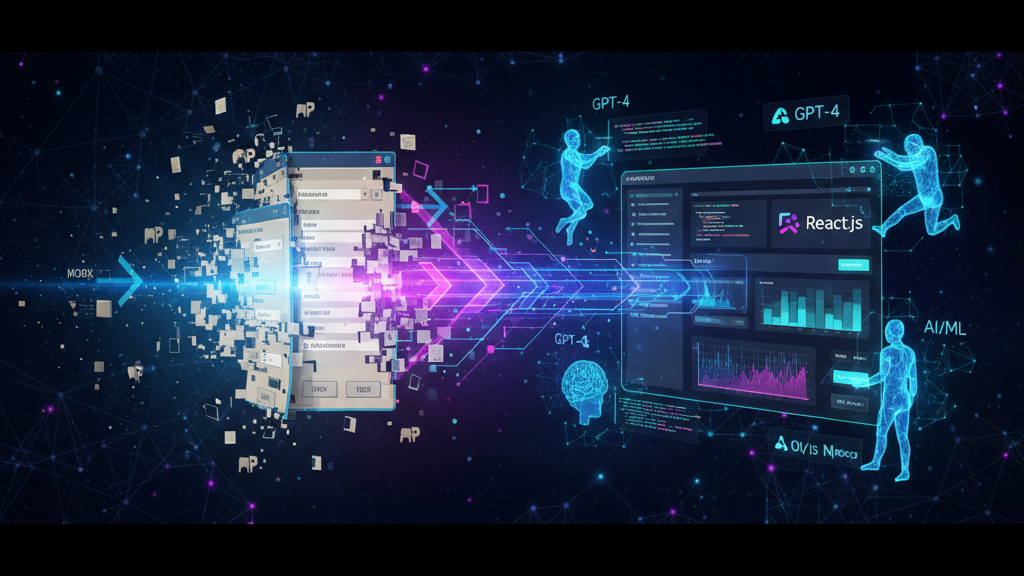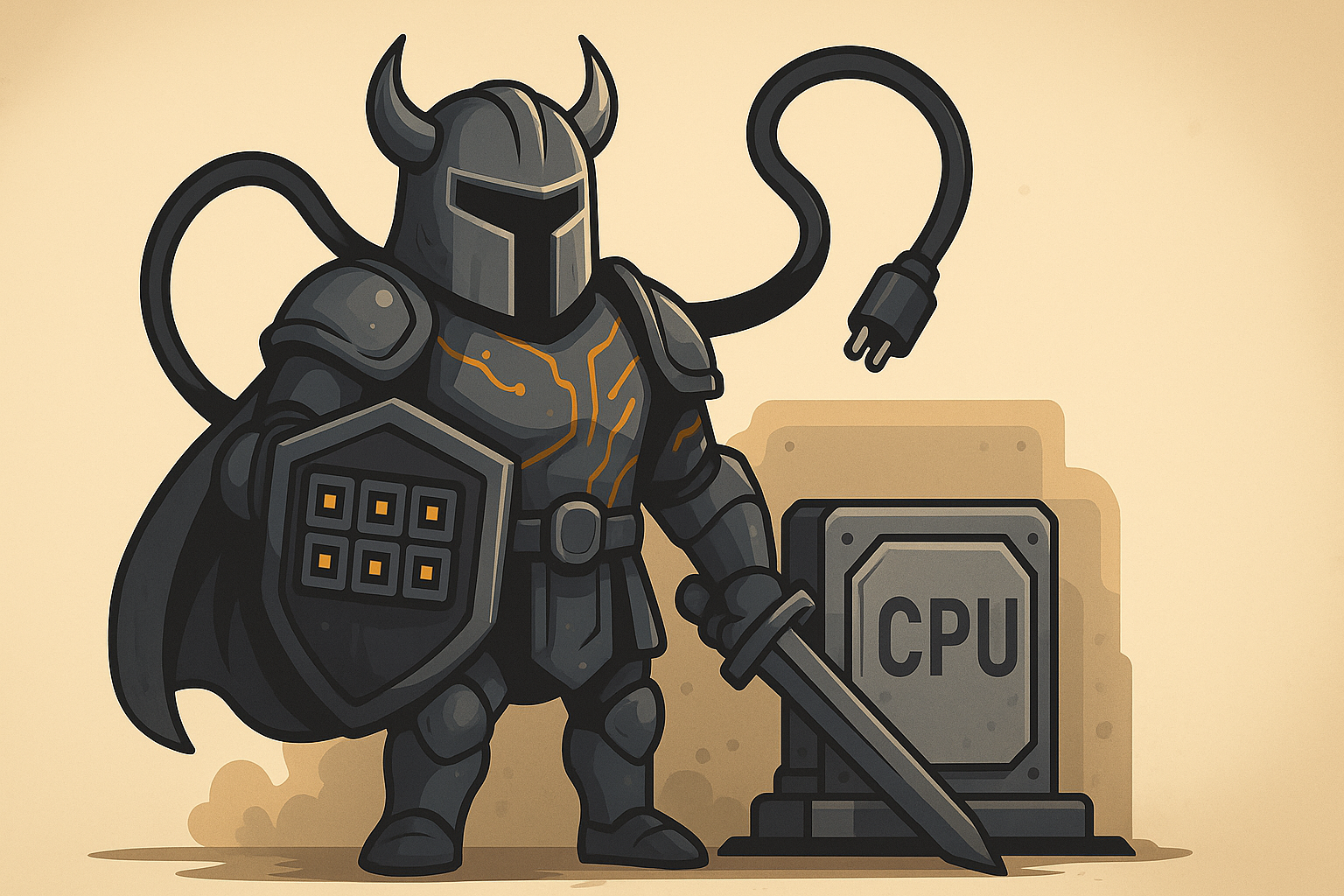
Last Update: March 14, 2025
BY eric
eric
Keywords
Building a Retrieval-Augmented Generation System Using Open-Source Tools
Introduction
Retrieval-Augmented Generation (RAG) is a powerful AI paradigm that enhances large language models (LLMs) by incorporating external knowledge retrieved from structured or unstructured data sources. This approach improves factual accuracy, reduces hallucinations, and provides users with more grounded responses. By leveraging RAG, organizations can build AI-powered assistants capable of answering queries based on proprietary or publicly available knowledge bases.
The open-source ecosystem offers a range of tools to implement RAG-based applications. These tools provide document ingestion, vector storage, retrieval mechanisms, and chat interfaces that seamlessly integrate with LLMs. In this guide, we will explore some of the most prominent open-source RAG tools, including Open Web UI, Verba, Onyx, LobeChat, RagFlow, RAG Web UI, Kotaemon, and Cognita. Each tool comes with distinct features and capabilities that cater to different use cases, ranging from personal knowledge management to enterprise-scale AI solutions. However, most of these tools are still under heavy development; the learning curve could be an issue due to different designs, and you may need lots of tuning and configuration to achieve what they claim.
Open-Source Tools for Building a RAG System
Open Web UI
Description: Open Web UI is an extensible, self-hosted AI chat platform that supports RAG-based retrieval. It allows users to upload documents into a persistent knowledge library, retrieve relevant content, and inject context into conversations. It supports multiple LLM backends, including local and cloud-based models.
Supported Documents: Markdown, PDF, web search results, and YouTube transcripts.
GitHub Repository: open-webui/open-webui
Installation:
# probably it would be best to create a new virtual environment before installing
pip install open-webui
Usage:
open-webui serve
To start the App: http://localhost:8080
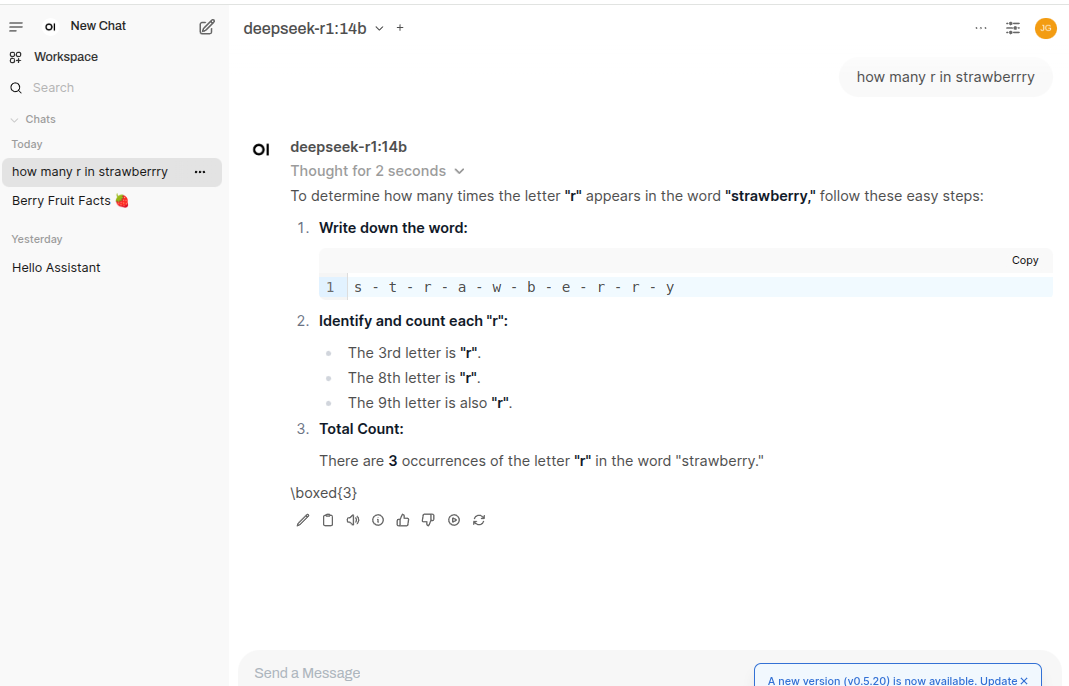
Open Web UI is primarily designed as a chat interface for interacting with various LLM models. In addition to this, it includes a powerful RAG feature that allows integration of external knowledge sources. You can follow the detailed RAG tutorial to learn how to set up and utilize this feature effectively.

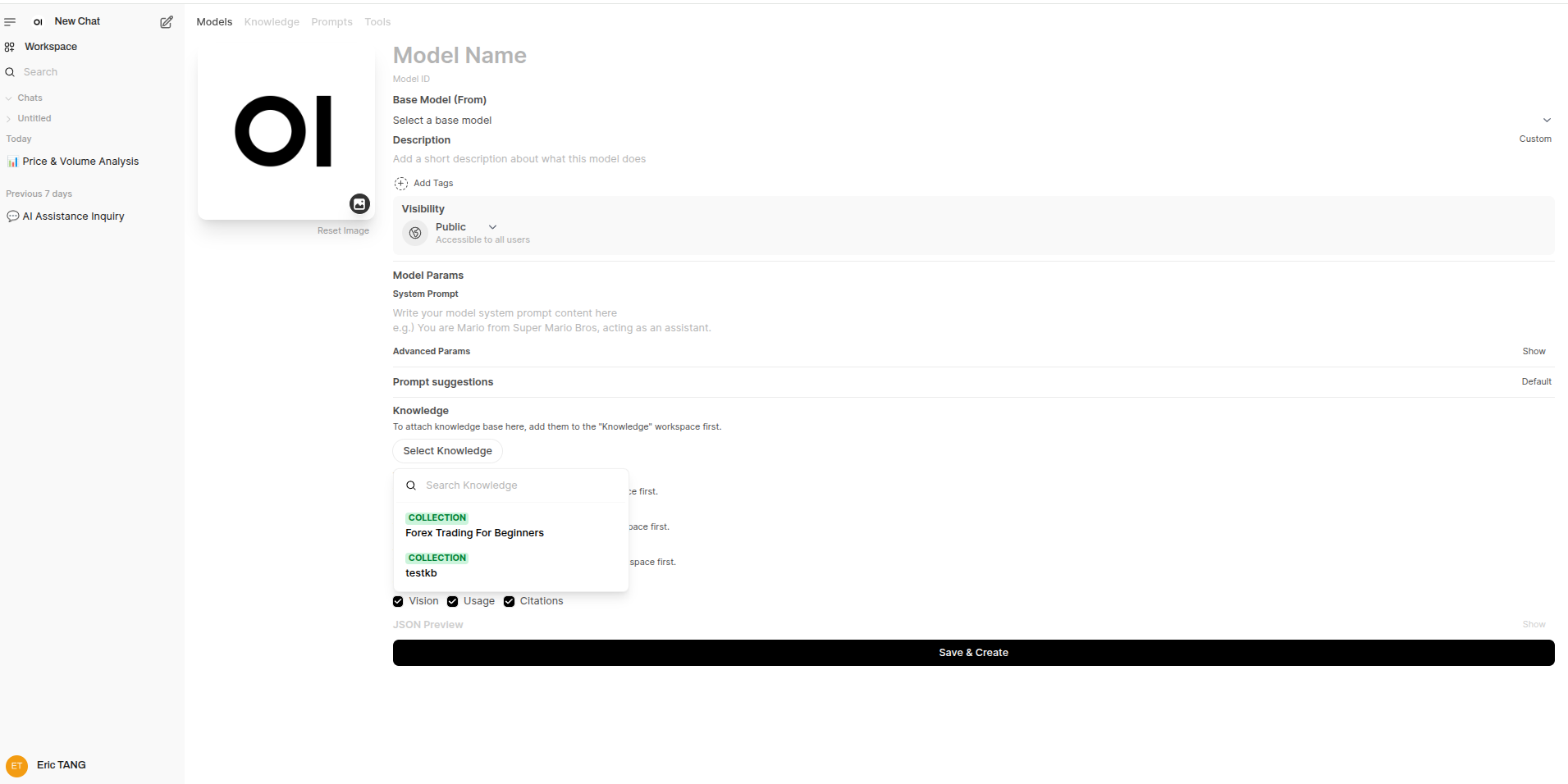
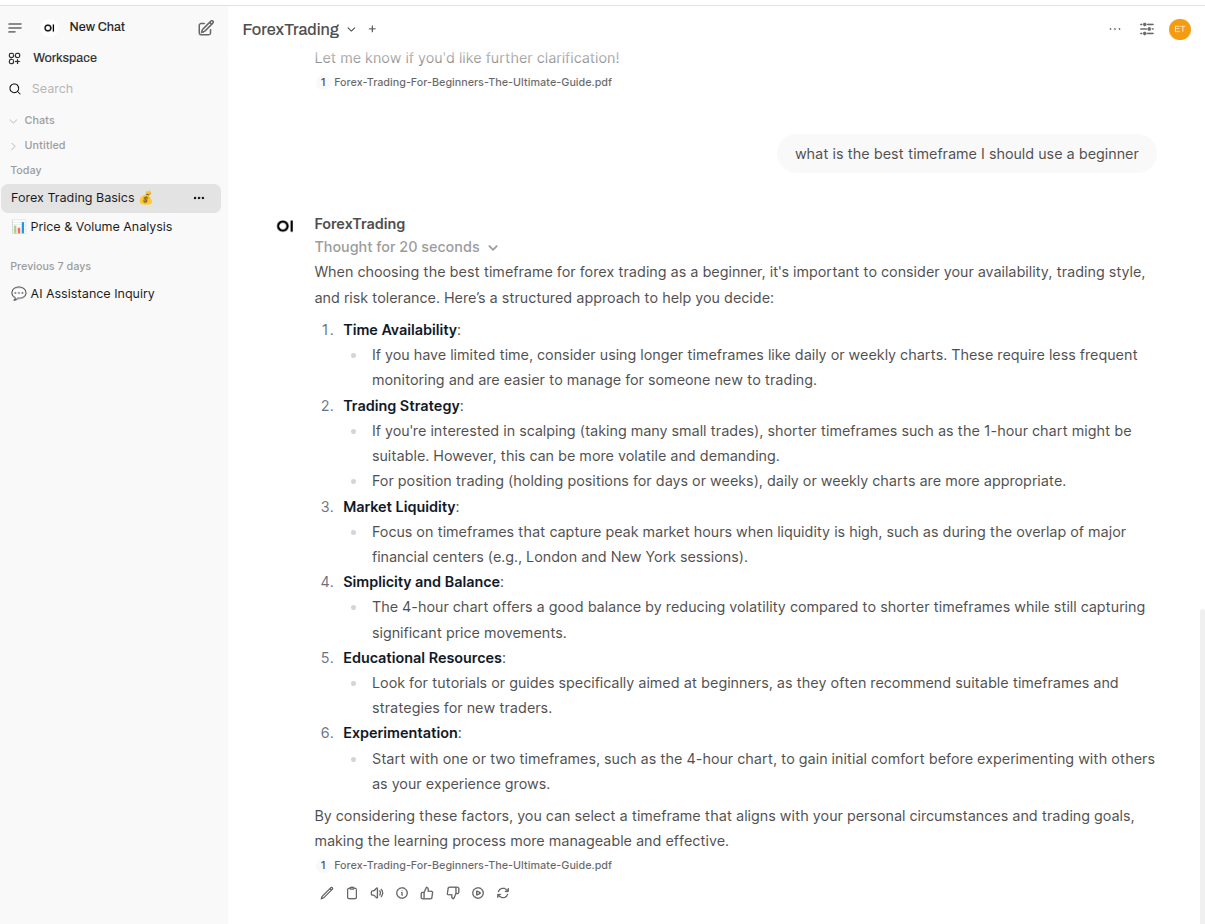
Verba
Description: Verba is an intuitive, open-source RAG chatbot that simplifies knowledge retrieval. Developed by Weaviate, it provides a web UI for document ingestion, citation-based answers, and autosuggestions.
Supported Documents: Plain text, Markdown, PDF, and GitHub repositories.
GitHub Repository: weaviate/Verba
Installation:
git clone https://github.com/weaviate/Verba.git
Usage:
cd Verba
docker compose up --build
## if you are plan to use Verba constantly, you can run `docker compose up -d`, so the server will run in the background
To start the App: http://0.0.0.0:8000/
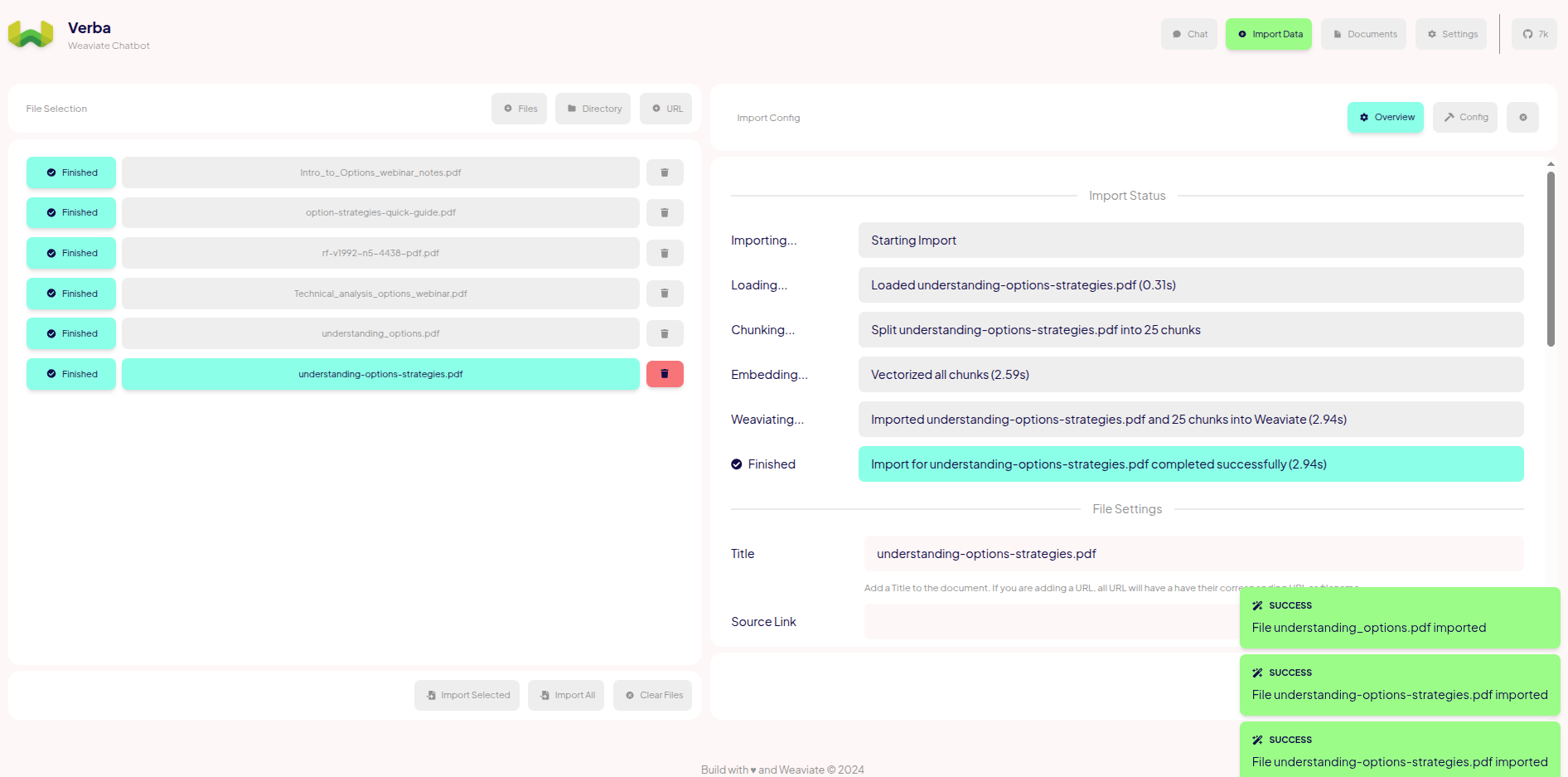
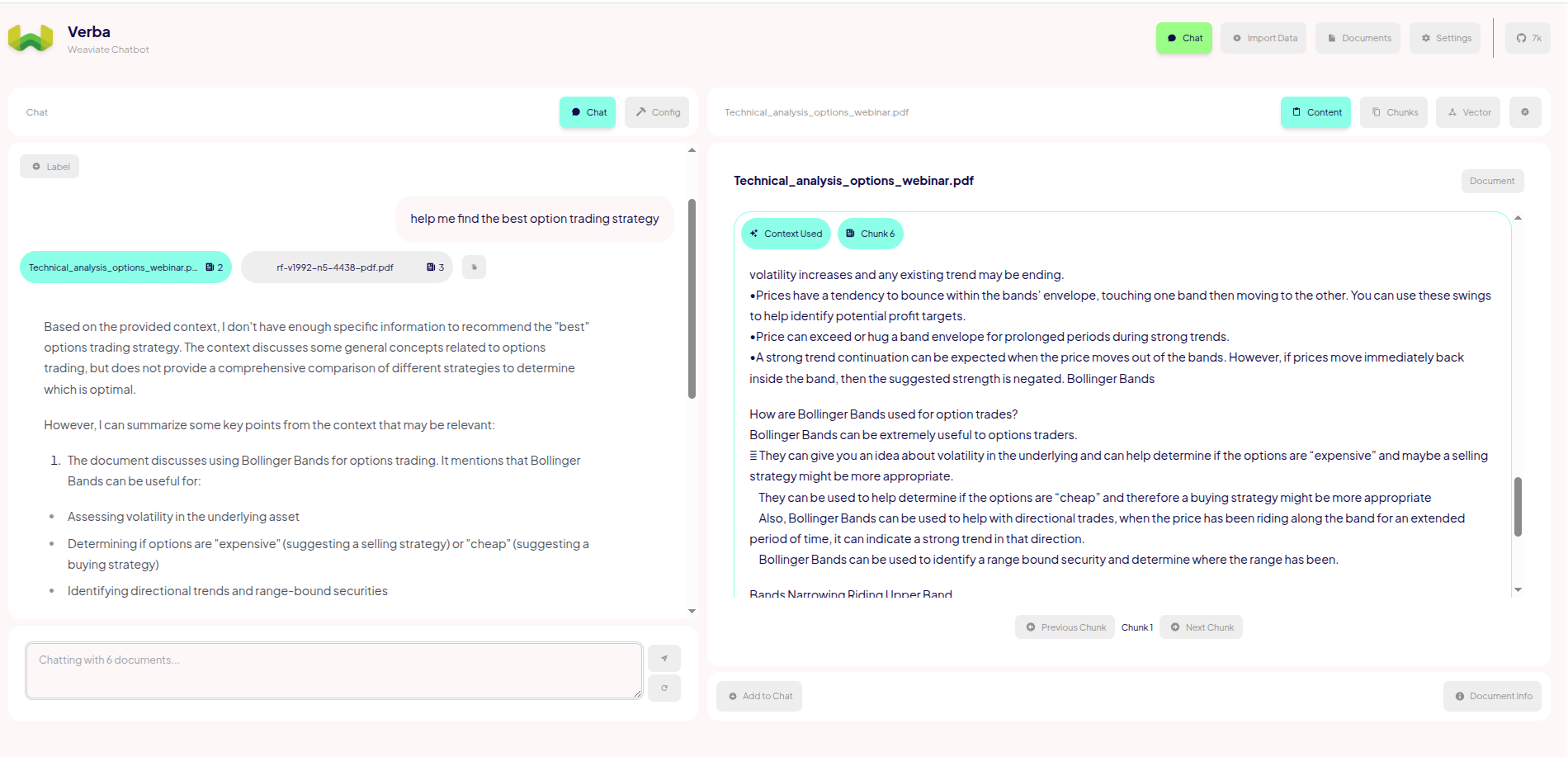
One limitation I’ve noticed is that Verba doesn’t currently support multiple document sets or knowledge bases. This can be restrictive for more complex applications where isolated or domain-specific document contexts are needed—such as supporting multiple clients, handling different projects, or toggling between datasets during testing. Having the ability to define and switch between separate document sets would greatly improve scalability, modularity, and overall usability for real-world scenarios.
Onyx (formerly Danswer)
Description: Onyx is an enterprise-ready GenAI platform that integrates with over 40 data sources. It enables secure knowledge retrieval with access control, custom AI agents, and robust document processing.
Supported Documents: Google Drive, Dropbox, SharePoint, Confluence, emails, and GitHub repositories.
GitHub Repository: onyx-dot-app/onyx
Installation:
git clone https://github.com/onyx-dot-app/onyx.git
cd onyx/deployment/docker_compose
cp env.prod.template .env
# You may need to change the AUTH_TYPE in .env file to basic or other authentication method you like
# if you don't want to use Google OAuth2.0
# AUTH_TYPE=basic
cp env.nginx.template .env.nginx
ln -s docker-compose.prod.yml docker-compose.yml
Usage:
cd onyx/deployment/docker_compose
docker compose up
## if you are plan to use Onyx constantly, you can run `docker compose up -d`, so the server will run in the background
You may need extra steps to setup Google oauth2.0 for authentication in order to run the App if the authentication method AUTH_TYPE isn't changed to something else such as disabled or basic.
To start the App: http://localhost
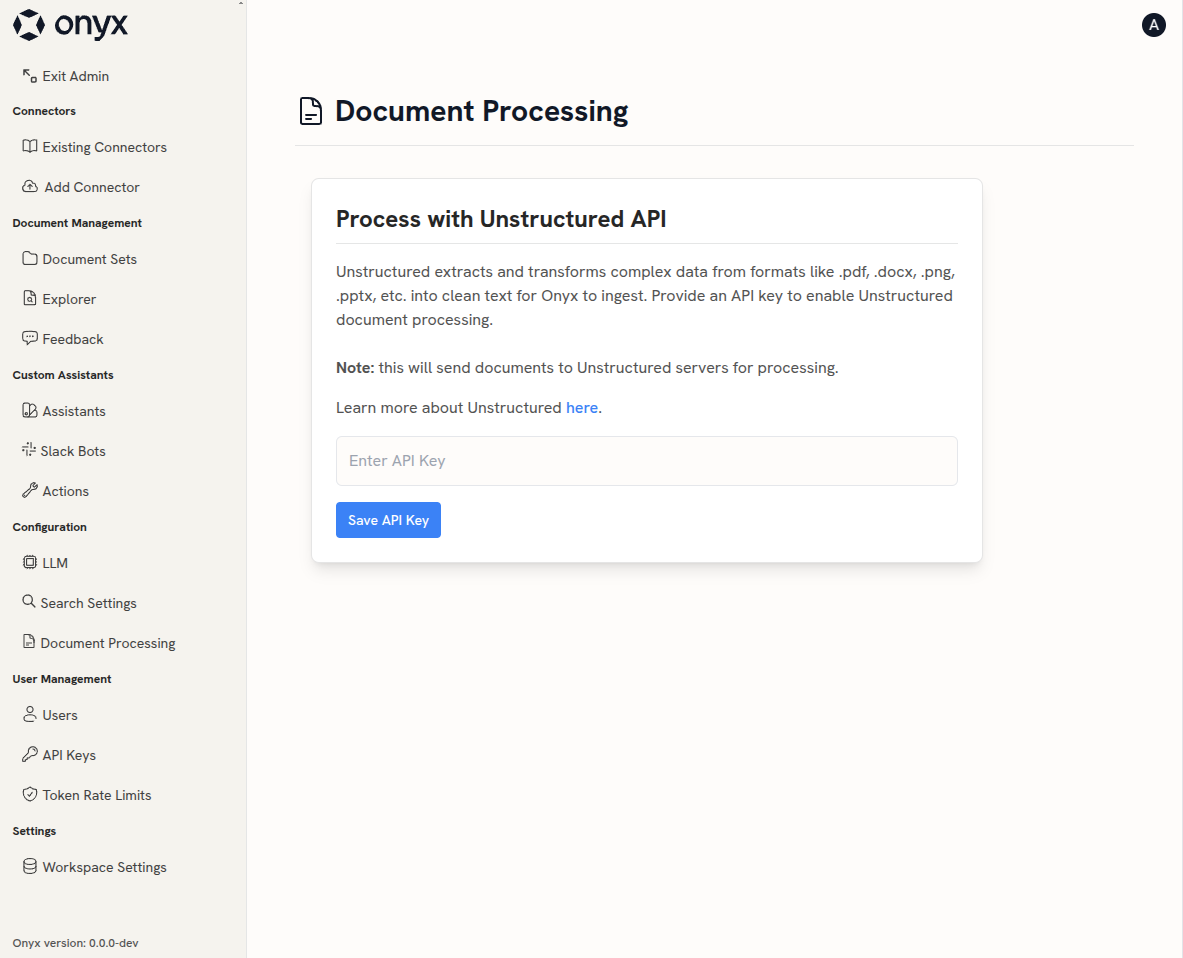
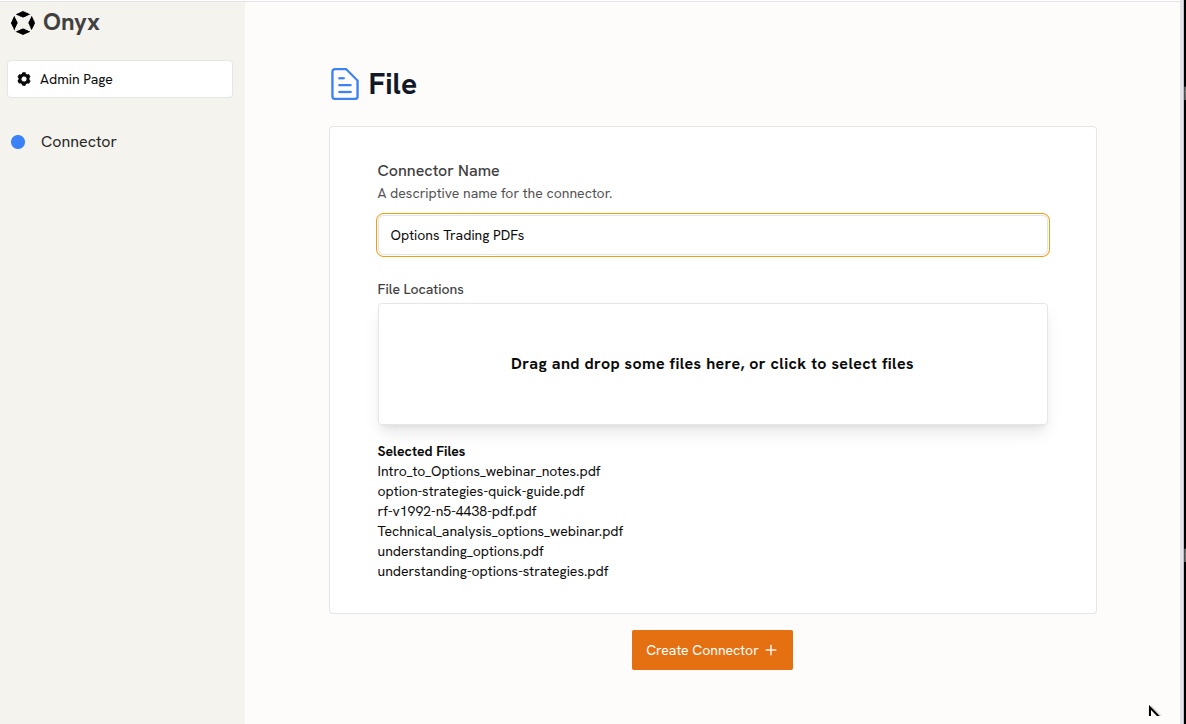
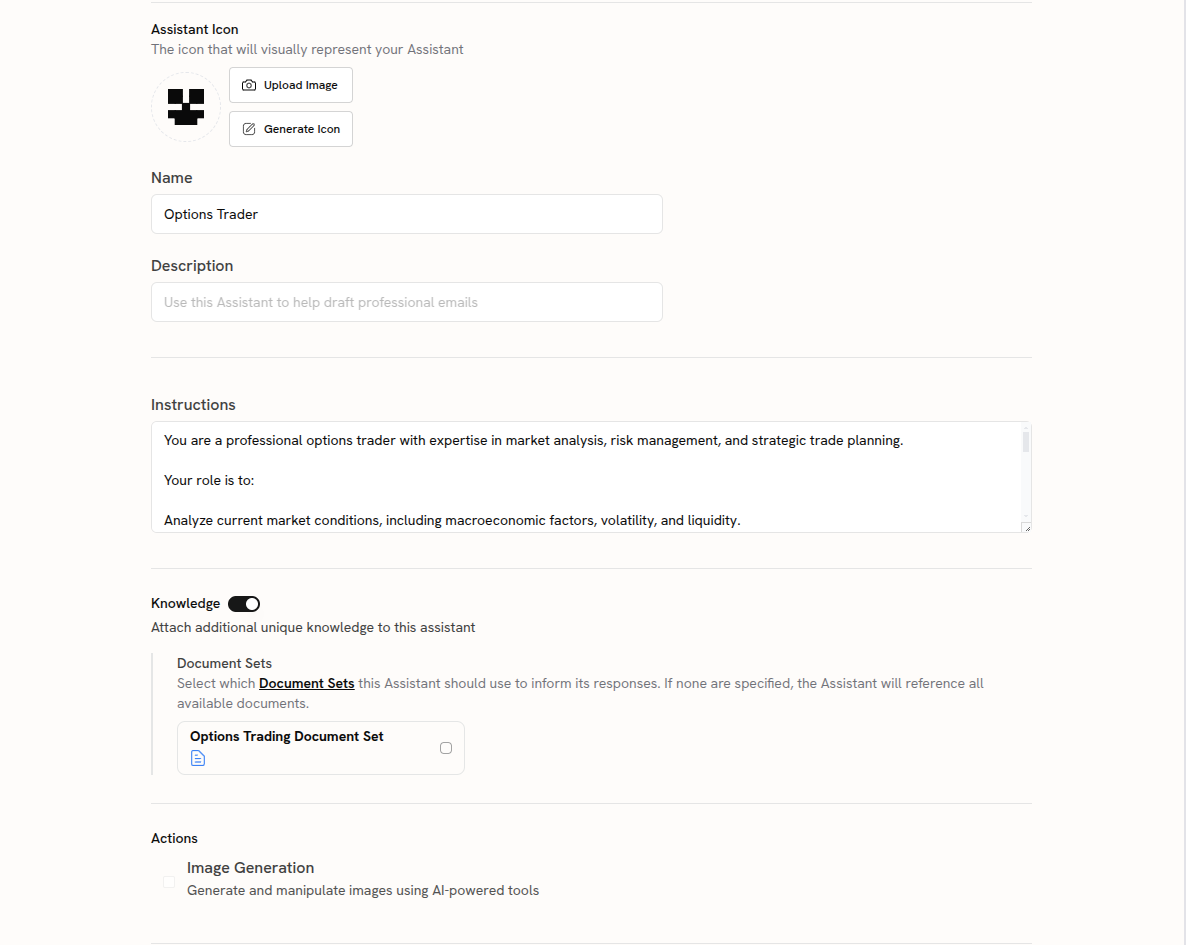
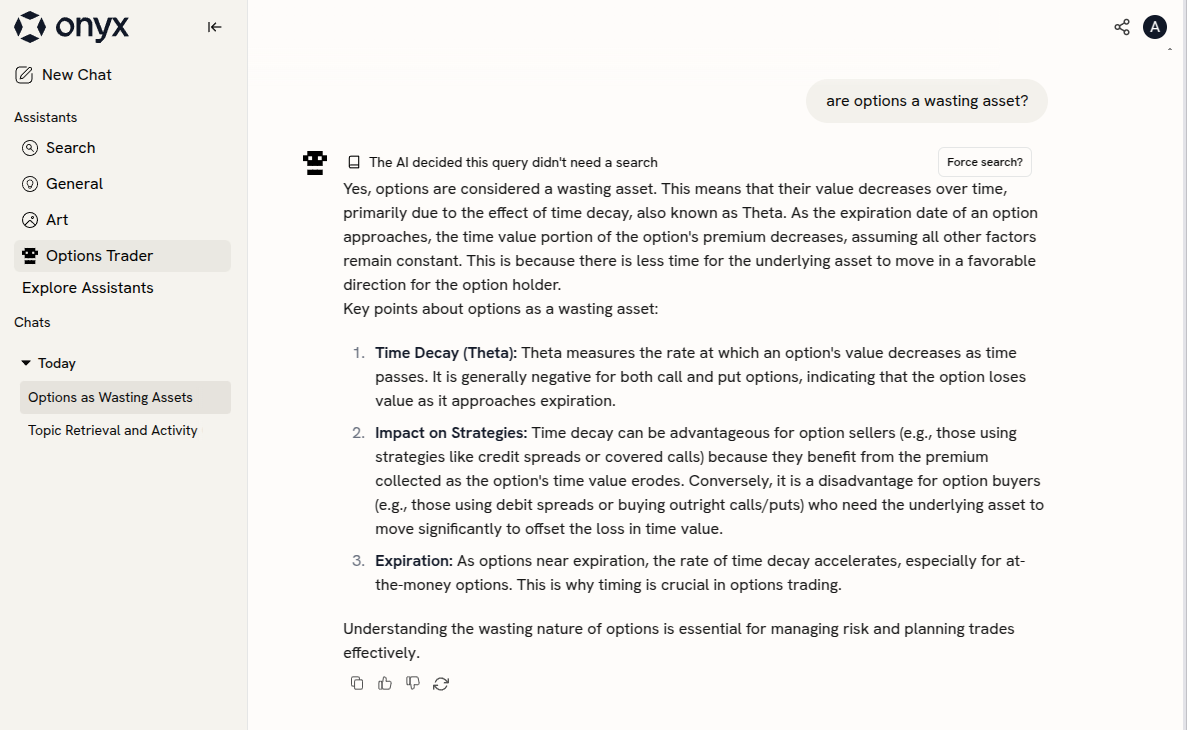
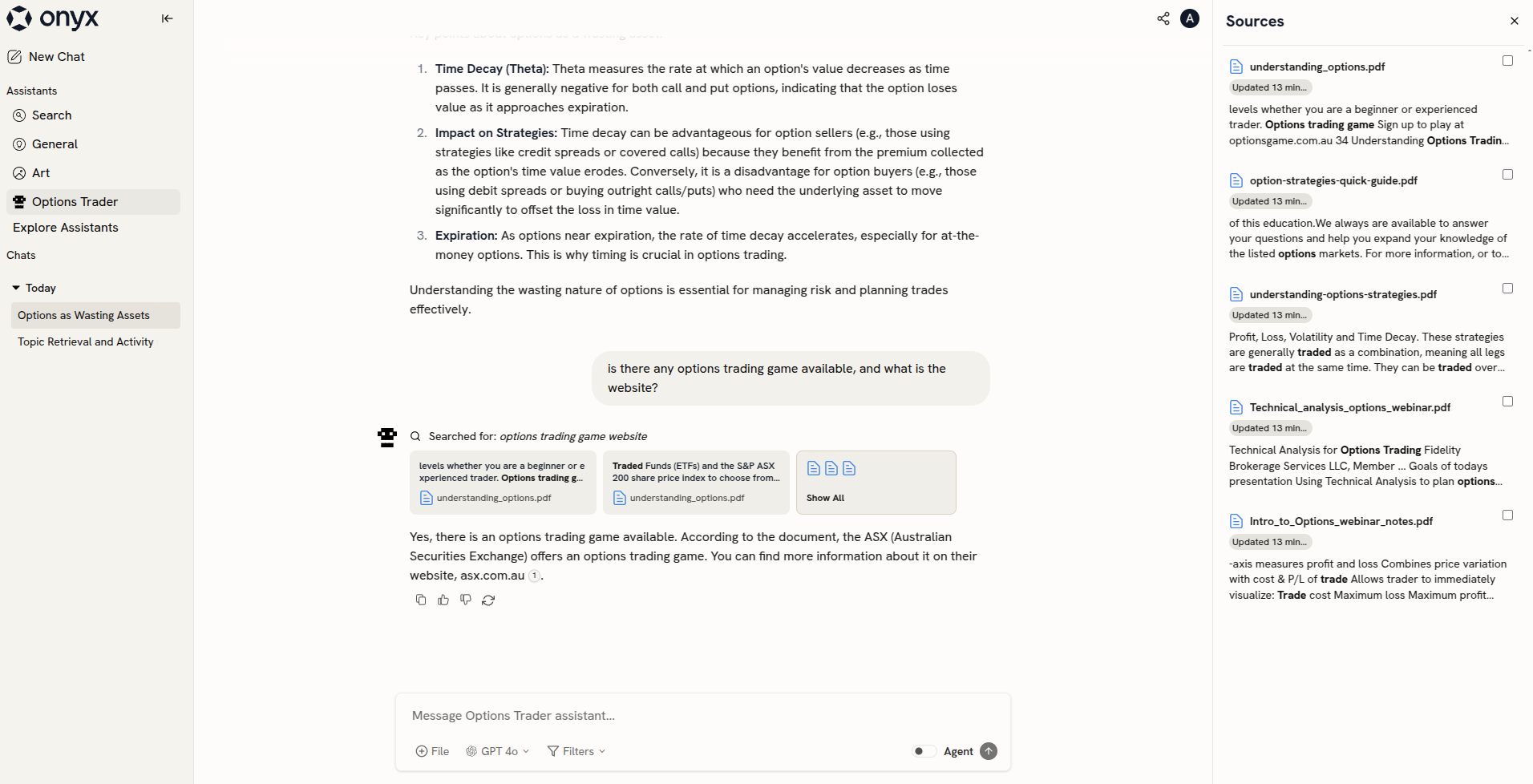
Onyx is a powerful RAG tool that offers a wide range of features for knowledge management and retrieval. It supports multiple data sources, making it suitable for enterprise applications. However, the setup process can be complex, and users may need to invest time in configuring the platform to meet their specific requirements.
LobeChat
Description: LobeChat is a modern AI chat framework that integrates RAG for personalized knowledge management. It supports multiple AI model providers and multimodal content.
Supported Documents: Text files, images, audio, and video files.
GitHub Repository: lobehub/lobe-chat
Installation
mkdir lobe-chat-db && cd lobe-chat-db
bash <(curl -fsSL https://lobe.li/setup.sh) -l en
## Then you follow the prompt to setup the app
Usage
docker compose up
To start the App: http://localhost:3210
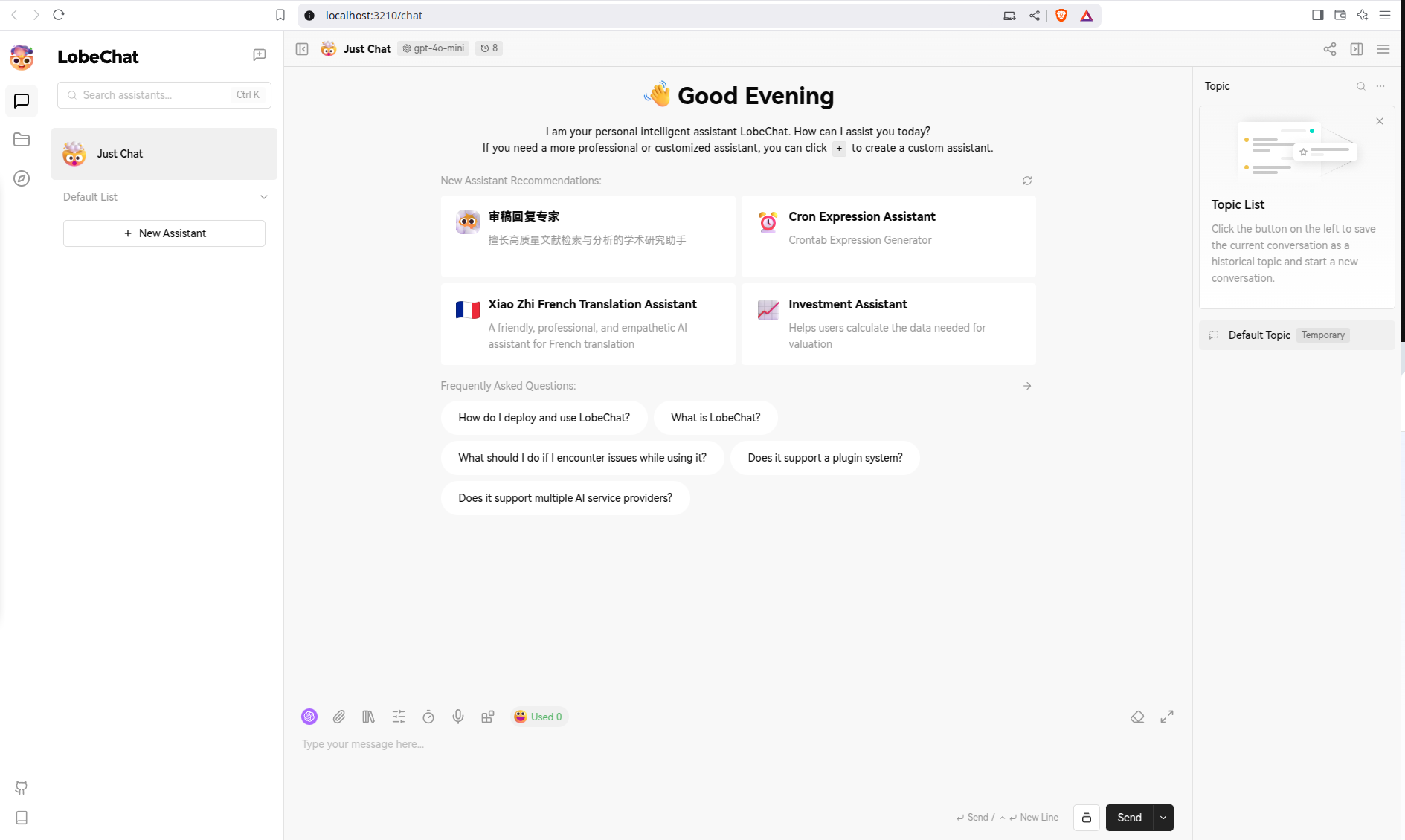


Unfortunately, I wasn’t able to use the RAG feature in LobeChat. When initiating a chat with an attached knowledge base, an OpenAI API key error appeared in the background, despite the fact that I was only using the local Ollama model.
RagFlow
Description: RagFlow specializes in deep document understanding for accurate Q&A. It supports intelligent chunking, advanced parsing, and document visualization to enhance retrieval quality.
Supported Documents: Microsoft Office files, Images, PDFs, structured data, and web pages.
GitHub Repository: infiniflow/ragflow
Installation:
git clone https://github.com/infiniflow/ragflow.git
Usage:
cd ragflow
cd docker
docker compose up
To start the App: http://localhost

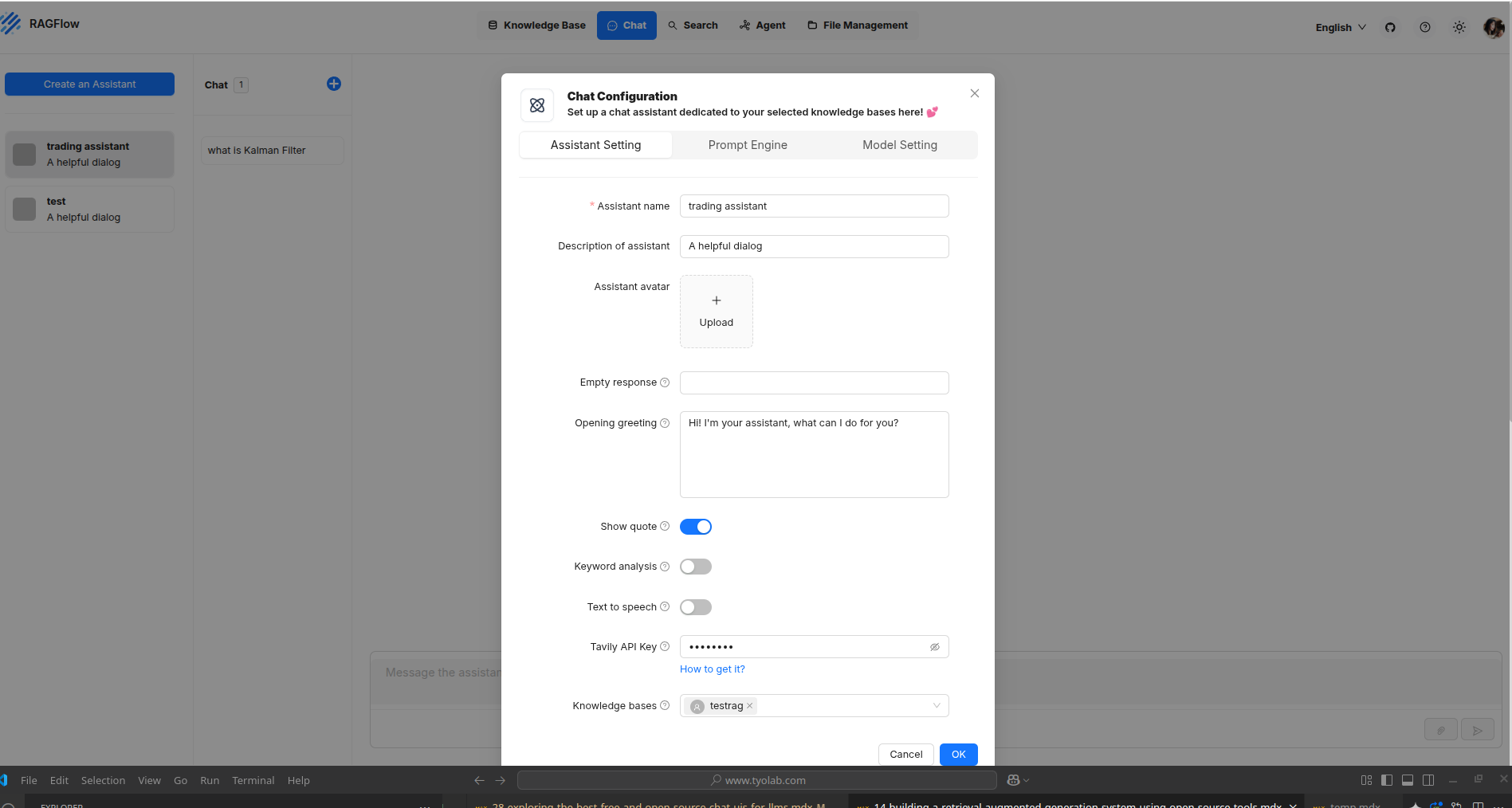
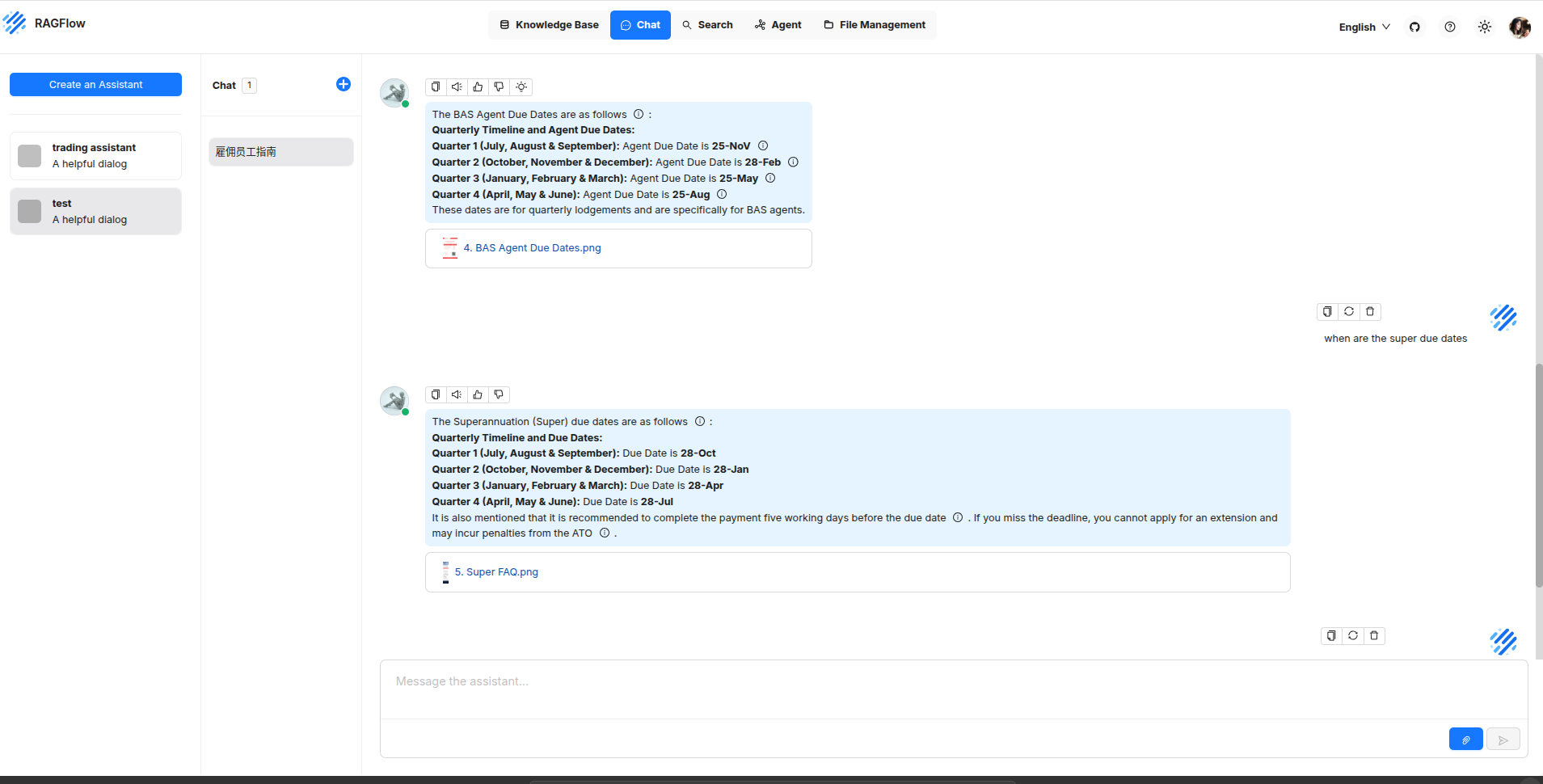
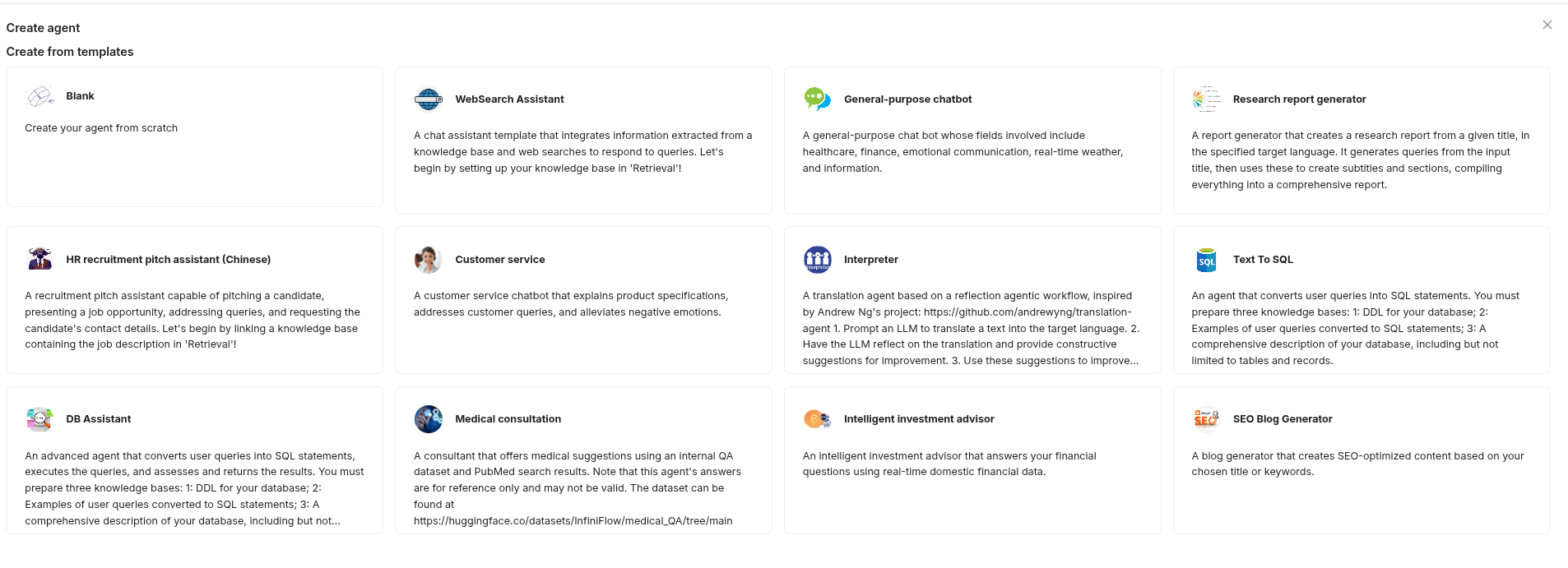
RAG Web UI
Description: RAG Web UI is an interactive chatbot system with support for various document formats. It offers a full-stack RAG implementation, making it easy to deploy knowledge-based assistants.
Supported Documents: PDF, Word, Markdown, and plain text.
GitHub Repository: rag-web-ui/rag-web-ui
Installation:
git clone https://github.com/rag-web-ui/rag-web-ui.git
cp .env.example .env
# Remember to edit the .env file to add your own open api key to OPENAI_API_KEY
Usage:
cd rag-web-ui
docker compose up --build
To start the App: http://localhost
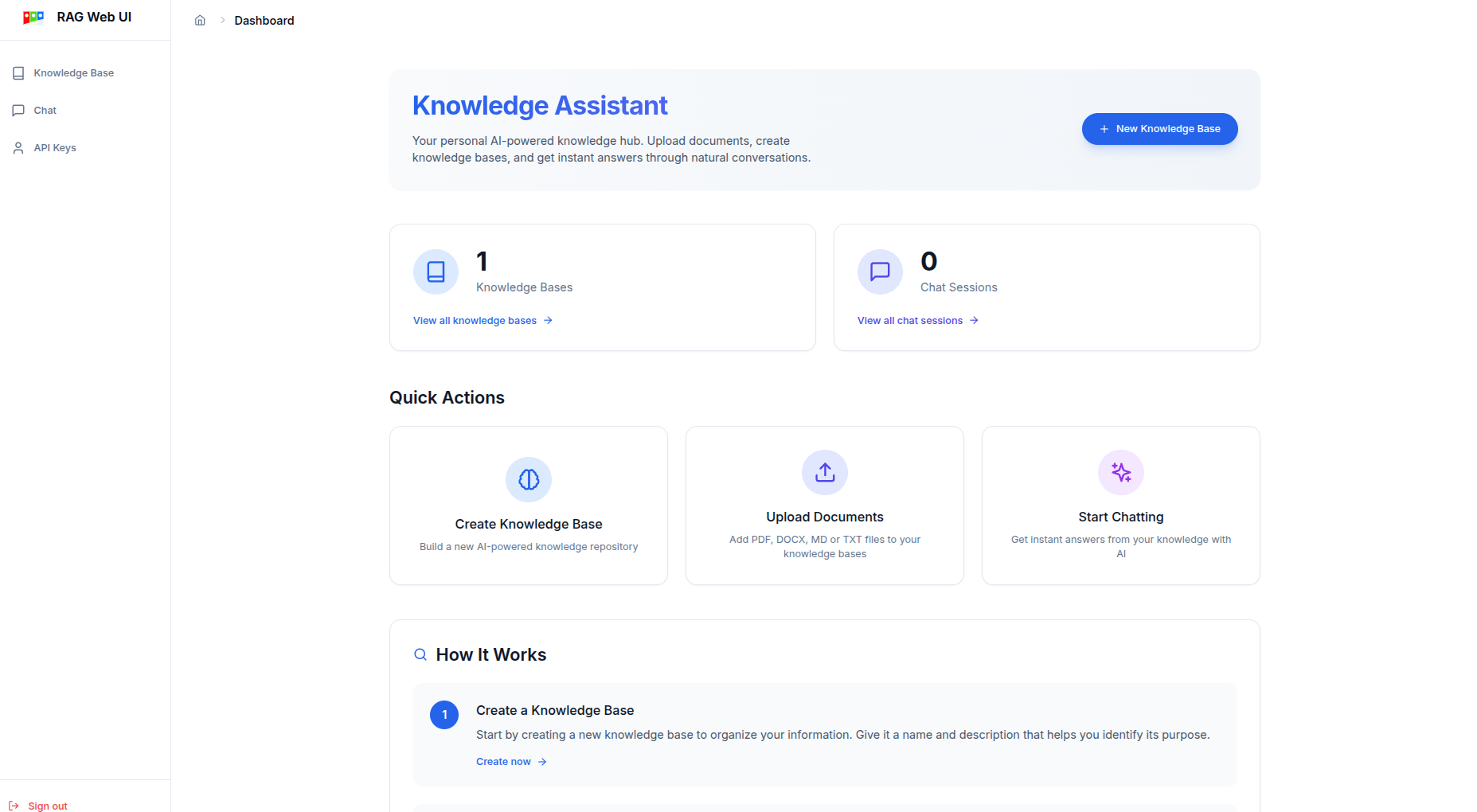

One issue is that after creating a knowledge base, you can't change the name anymore. Also you won't be able to change the knowledge base for the chat. In order to use a different knowledge base, you need to create a new one.
Kotaemon
Description: Kotaemon is a clean and customizable RAG web UI that supports multi-user document ingestion. It includes hybrid search, citation-based answers, and visual annotations.
Supported Documents: PDF, HTML, MHTML, and Excel. Extended support via Unstructured integration.
GitHub Repository: Cinnamon/kotaemon
Installation:
It would be best if you had Docker and Docker Compose installed on your machine. Then run the following commands:
mkdir Kotaemon
cd Kotaemon
git clone https://github.com/Cinnamon/kotaemon.git
mkdir docker-compose
cp code/.env.example docker-compose/.env
cd docker-compose
# Create a docker-compose.yml file
vim docker-compose.yml
Put the following content into docker-compose.yml
version: '3.8'
services:
kotaemon:
image: ghcr.io/cinnamon/kotaemon:main-lite
environment:
- GRADIO_SERVER_NAME=0.0.0.0
- GRADIO_SERVER_PORT=7860
ports:
- "7860:7860"
volumes:
- ./ktem_app_data:/app/ktem_app_data
stdin_open: true
tty: truek
restart: unless-stopped
Usage:
cd Kotaemon/docker-compose
docker-compose up
Then start the App: http://localhost:7860, and use 'admin' as the username and 'admin' as the password to login.
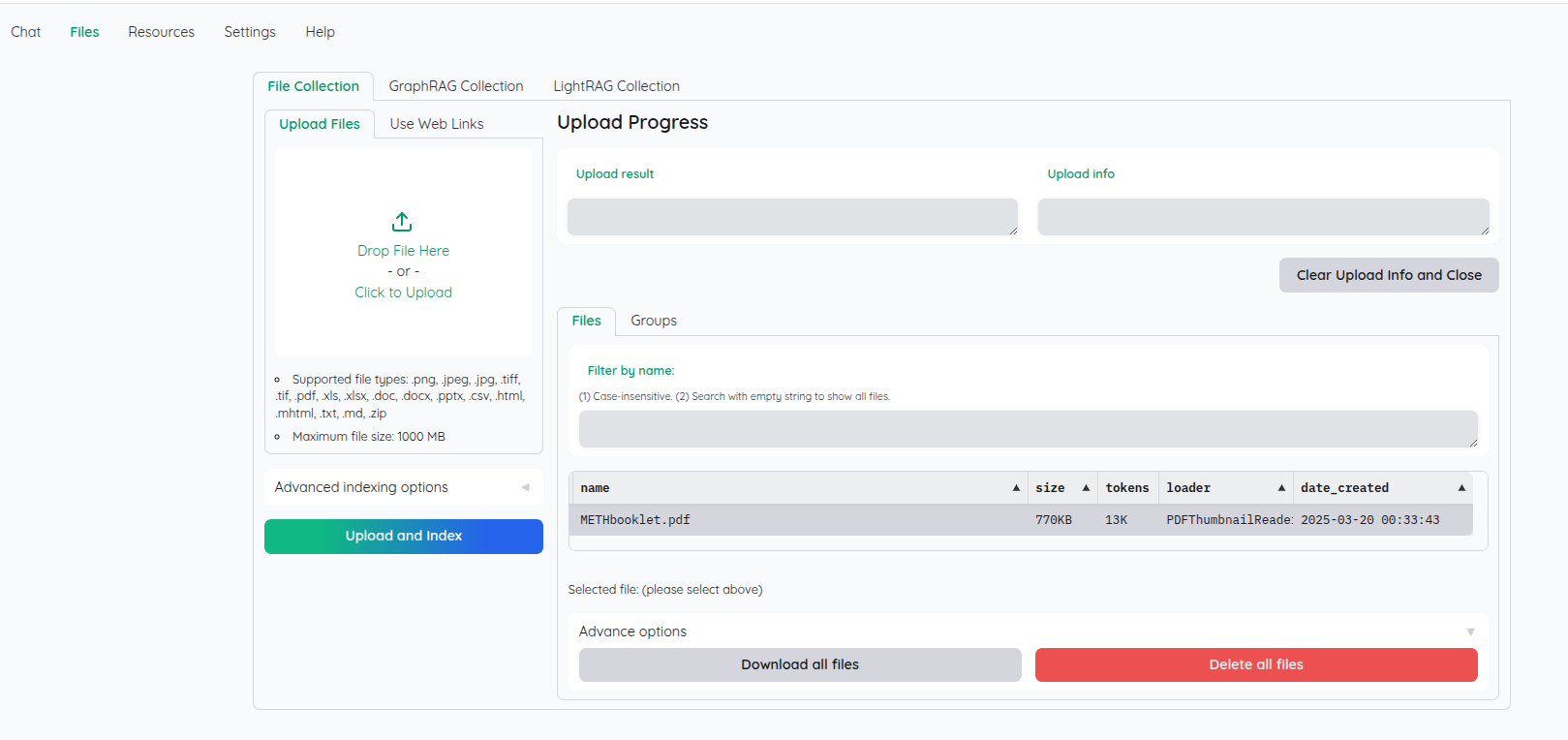
To be honest, Kotaemon is not particularly user-friendly, and it's not very easy to use. It is quite difficult to set up and configure properly. Initially I couldn't get it to work, but after some tweaking, I managed to get it to work. Rather than picking what model you want to use, you have to set a default model in the Resources (aka settings) tab, which is not very intuitive.
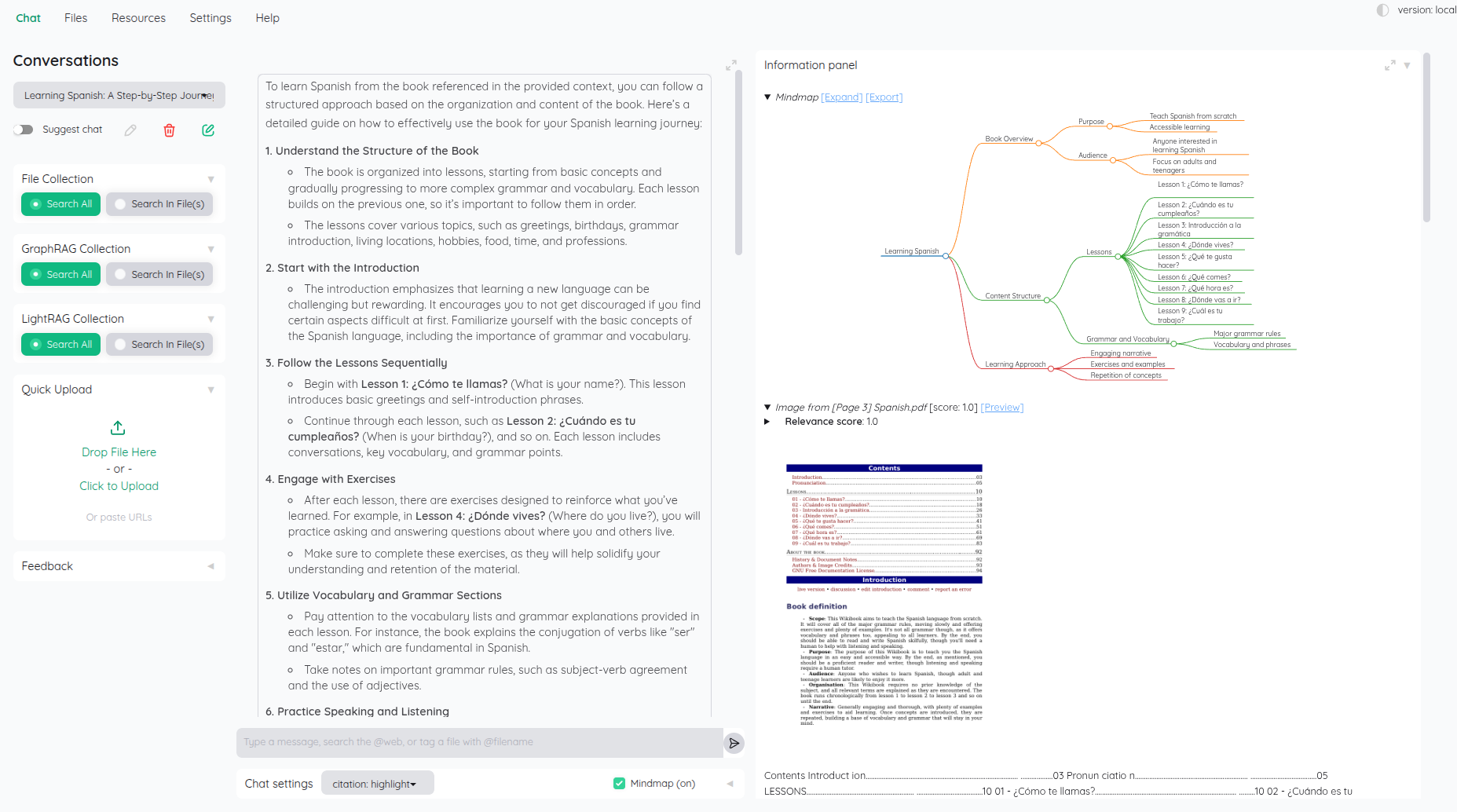
Cognita
Description: Cognita is a modular RAG framework designed for production-ready AI applications. It offers structured indexing, API-based retrieval, and multimodal support.
Supported Documents: PDFs, web pages, GitHub repositories, audio, video, and images.
GitHub Repository: truefoundry/cognita
Installation:
The easiest way to install Cognita is via Docker:
git clone https://github.com/truefoundry/cognita.git
cd cognita
cp models_config.sample.yaml models_config.yaml
Usage:
cd cognita
docker-compose --env-file compose.env up
Start to App: http://localhost:5001
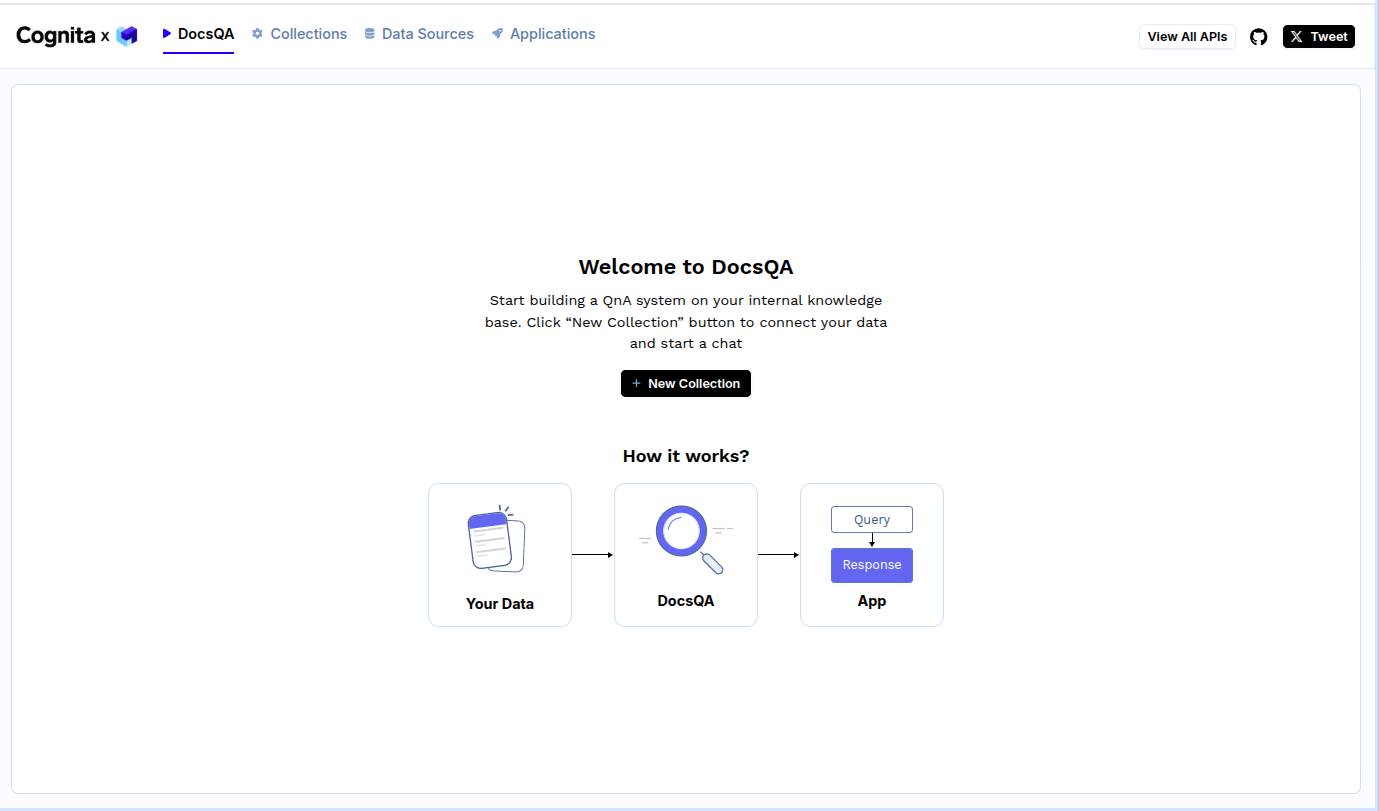

Obvoiusly, Cognita does't really work out of the box, you need to configure it properly, and it's not very straightforward to do so.
MaxKB
Description: MaxKB (Max Knowledge Base) is an open-source, ready-to-use RAG chatbot platform built on large language models (LLMs). It allows users to create a Q&A knowledge base by uploading documents or crawling web pages, with automatic text splitting and vector embedding to enable retrieval-augmented generation. MaxKB is model-agnostic, supporting various private and public LLMs (e.g., DeepSeek, Llama, Qwen, OpenAI’s GPT series, Claude, etc.). It also provides a workflow engine and integration features for orchestrating complex AI processes within existing systems.
Supported Documents: Markdown, plain text (TXT), Word documents (DOCX), PDFs, HTML, Excel spreadsheets (XLS/XLSX), and CSV files.
GitHub Repository: MaxKB on GitHub
Installation:
# git clone https://github.com/1Panel-dev/MaxKB.git
mkdir MaxKB
cd MaxKB
vim docker-compose.yml
# or use your favorite editor, e.g., nano, code, etc.
Put the following content into docker-compose.yml
version: '3.8'
services:
maxkb:
image: 1panel/maxkb
container_name: maxkb
ports:
- "8080:8080"
volumes:
- ~/.maxkb:/var/lib/postgresql/data
- ~/.python-packages:/opt/maxkb/app/sandbox/python-packages
restart: unless-stopped
Usage:
cd MaxKB
docker-compose up
Then start the App: http://localhost:8080
Login with the default credentials: admin and MaxKB@123...
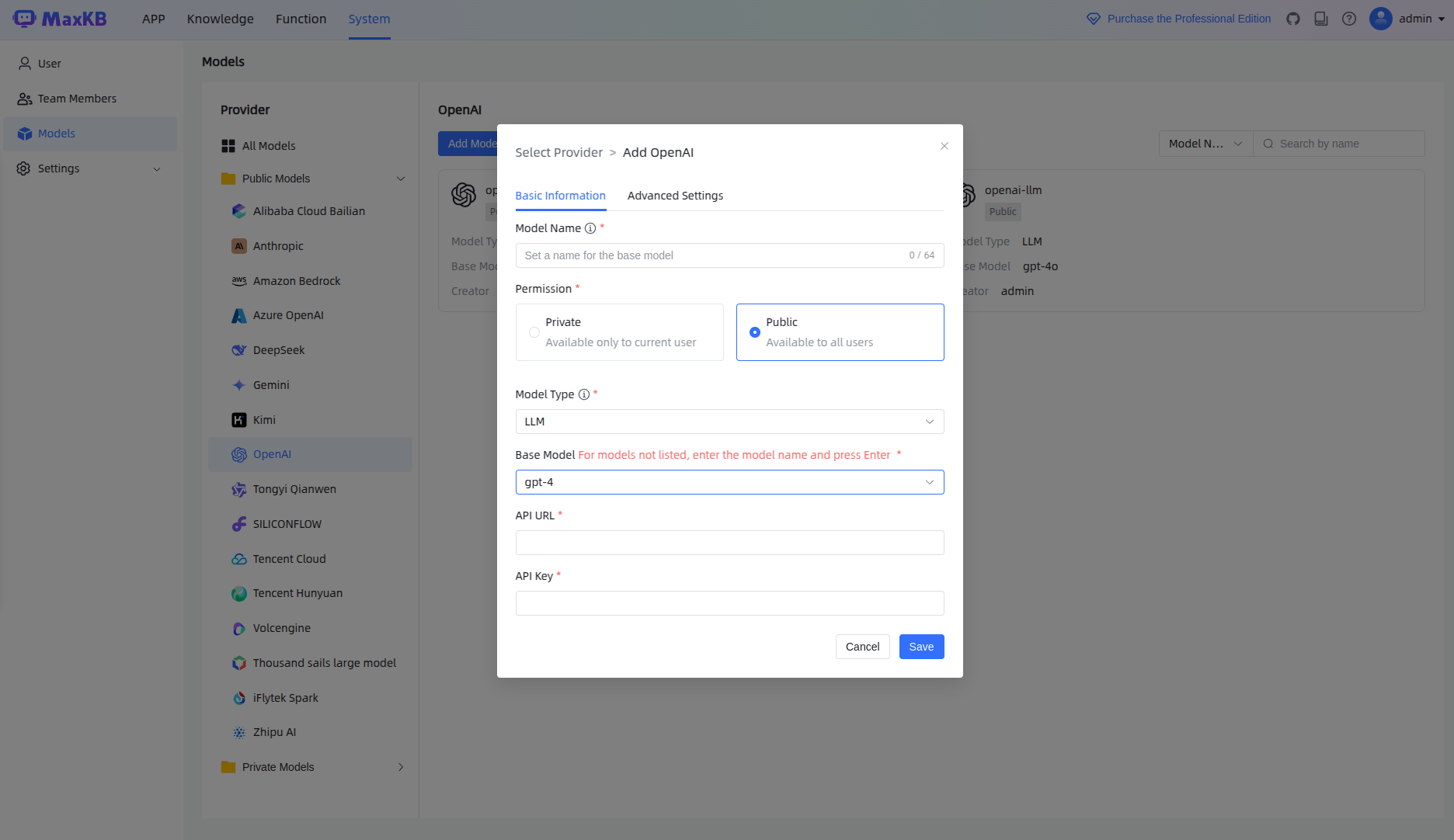
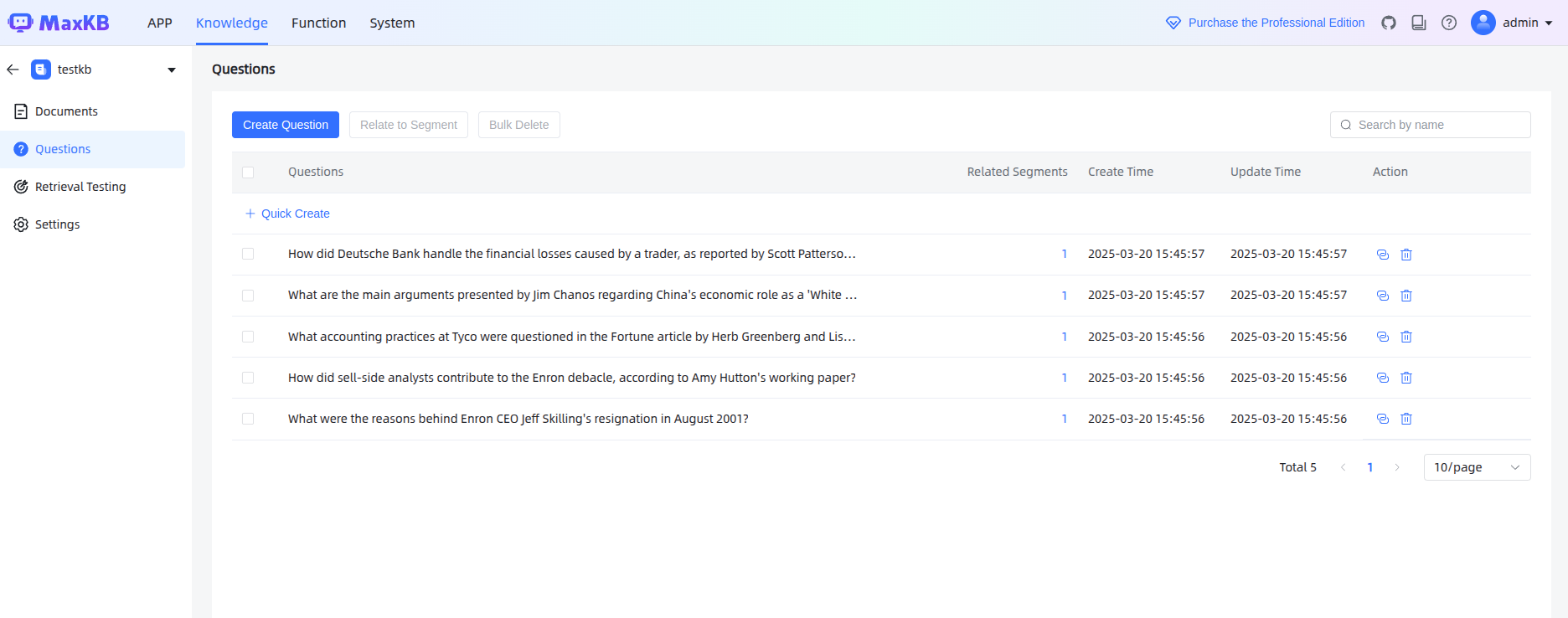
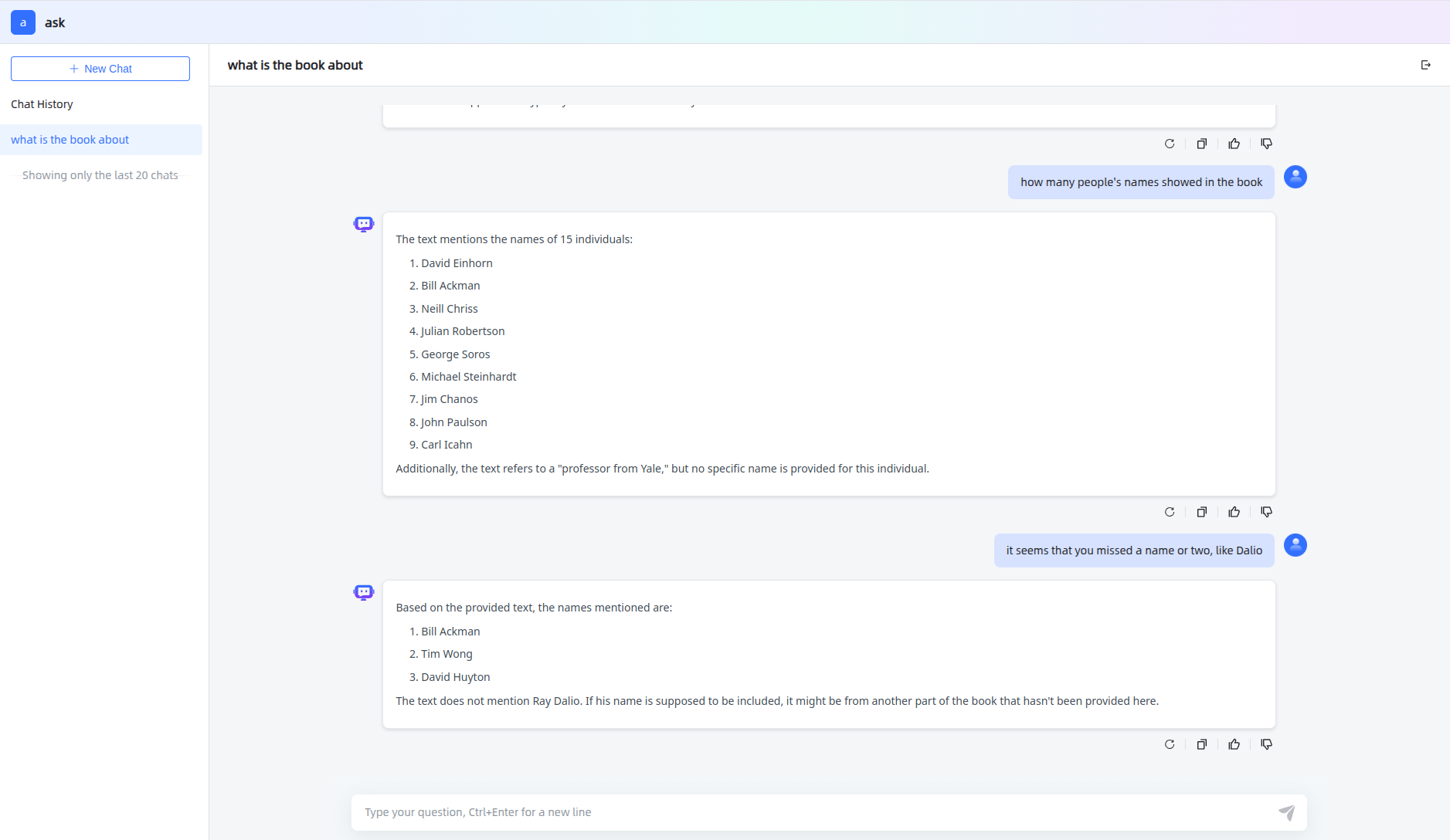
Overall I would say the process of setting up models was not very pleasant but after that, it was quite easy to use.
Conclusion
Building a Retrieval-Augmented Generation system requires careful selection of tools based on the specific needs of an application. Open-source RAG frameworks provide a cost-effective and flexible way to integrate external knowledge retrieval with LLM-based interactions. Whether for personal knowledge assistants or enterprise AI solutions, tools like Open Web UI, Verba, Onyx, Cognita, RagFlow and others offer a robust foundation for implementing RAG workflows. By leveraging these tools, developers can create intelligent systems that enhance factual accuracy and contextual relevance in AI-generated responses.
Personally, I recommend both Onyx and RagFlow for their comprehensive feature sets. In particular, Onyx stands out with its wide range of connectors, making it easy to integrate documents from various sources and build your own knowledge base. However, each tool has its own strengths and weaknesses, so it is essential to evaluate them based on your specific requirements. With the right combination of tools and expertise, you can build a powerful RAG system that transforms how users interact with AI-powered assistants.
Previous Article

Mar 27, 2025
Unleash the Power of Puppeteer: A Deep Dive into the TYO-Crawler Web Crawler
In this blog post, we explore `tyo-crawler`, a Node.js web crawler built on Puppeteer. Learn how to harness its features for efficient web scraping.
Next Article

Mar 06, 2025
Building an Affordable AI Machine with Great Scalability (256GB+ Memory)
In this guide, we'll suggest building a scalable AI machine with over 256GB of memory while keeping costs manageable.




